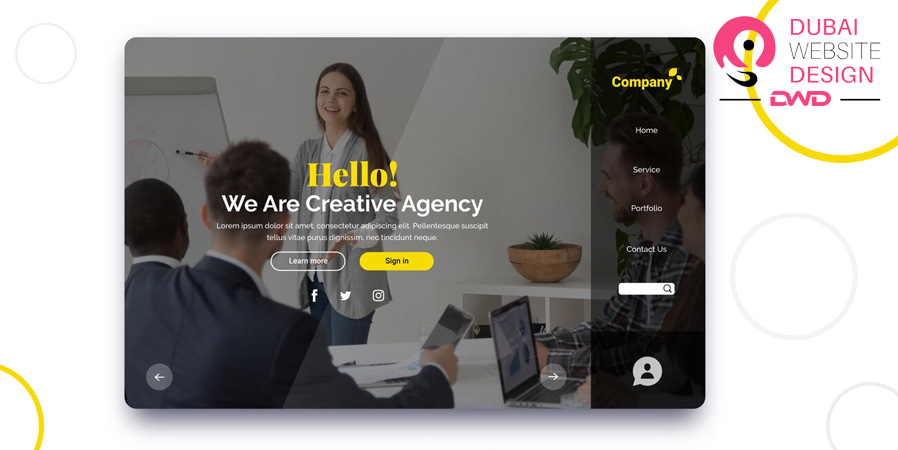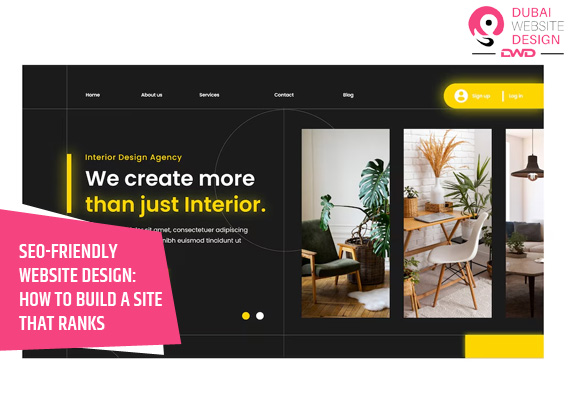Creating an SEO-friendly web design from scratch includes preparing and executing strategies for Search Engine Optimisation. An SEO-friendly website increases the brand’s credibility. When building an SEO-friendly website, you must understand what search engines consider.
This guide covers ten ways to make your website relevant with Google as well as other search engines.
-
Use Keywords Throughout Your Content
Keywords assist the search engine in understanding the topic of the website. Use important terms naturally in headings, in the body of the content, and image descriptions. For instance, the use of words such as ‘healthy cookies’, ‘custom cakes’, and ‘cupcakes’ when writing SEO-friendly content for a bakery website.
Keyword research tools are used to identify the right keywords. Try to find targeted keywords that your potential customers type in the search engines. Don’t overuse terms and phrases in your writing. The text’s readability and rankings may suffer as a result.
-
Use Header Tags
Header tags (H1, H2, H3) structure your content and facilitate the search engine to crawl your website more accurately. Like, you can use H1 as the main title, whereas H2 and H3 for subheadings.
Remember, every page should include one H1 tag. Proper header structure helps in the ease of understanding content. Headers are similar to the list of sections for the page content. You can also include relevant SEO keywords in other headers once you optimise the main title.
-
Have a Clean URL Structure
Short and simple URLs with the target keyword are better for SEO. Do not use many numbers or symbols in the web addresses of the sites.
A page about chocolate cake, for instance, might have the URL cafecookie.com/chocolate-cake. Alternatively, utilising lengthy query strings that contain numbers, such as cafecookie.com/p=123¬herechoclate=8?item=745, makes them less compatible with SEO and difficult to understand.
Clean URLs make website addresses easier for users to remember. In addition, they improve the way links are displayed on social media sites. There are easy ways of producing clean URLs with WordPress development.

-
Include Keyword-Rich Anchor Text in Links
Clickable words known as “anchor text” direct visitors to a different page or portion of the website. Use relevant keywords when linking between pages. For example, if you’re linking about cake recipes, use anchor text such as Click here to see our [homemade chocolate cake recipes].
SEO-friendly anchor texts help both visitors and search engines. Avoid stuffing your anchor text with keywords, as this could lower the website’s search engine ranking. Make sure that every link works correctly. Broken links are annoying and can lead to low ranks in search engine results.
-
Ensure the Website is Mobile-Friendly
Mobile-friendly websites rank better on search engines. Your website should therefore be responsive in design. This ensures that everybody who visits can read and browse with ease.
Make buttons and links easy to tap with fingers on small screens. Mobile visitors often have different needs. Custom development can create unique mobile experiences. This makes websites stand out from competitors.
-
Optimise Images
Optimise images to make them smaller in size. Add descriptive alt text to make the search engines understand the pictures that are included. You can also add short captions under your images.
Large images are bad for websites as they cause delays. Optimise images by using an image compressor that enables you to reduce the size of the images without compromising the quality of the images. Store images in the right format. JPG is ideal for images, while PNG is ideal for graphics with text.
-
Make Sure Web Pages Load Fast
Slow websites lose visitors quickly. WordPress development has many plugins to enhance the loading speed of a site or a webpage.
Tips for faster loading:
- Compress images
- Use caching
- Minimise code
- Choose good hosting
- Enable browser caching
- Use content delivery networks
Mobile users are particular about speed. Try to check its loading time on different devices.
-
Promote Your Content through Social Media
Post the website’s content on social media platforms. This can enhance the website’s position within the search engine results pages. Some of the platforms you may use include Facebook, Instagram, LinkedIn, Twitter, Pinterest, and YouTube.
Create different types of content for each network. Instagram is the best place for the photos, and LinkedIn is the best place for the lengthy content. Always make sure to use the CTAs and referral sites links in both the content and the profile. Engaging CTAs with good language increases the traffic to the site.
-
Clean Up and Organise Site Code
Clean code makes it easier for search engines to crawl through the website. Custom development results in a better structure of the code.
Tips for clean code:
- Remove unused code
- Organise CSS files
- Minimise JavaScript
- Fix broken links
- Validate HTML
- Use proper indentation
- Comment code sections
Good code structure makes websites easier to maintain. It also assists in making pages load faster.
-
Optimise Title Tags and Meta Descriptions
Every page has its own meta description and title tag. The ones that appear in search engines are these.
Verify that titles don’t exceed 60 characters. For maximum effectiveness, meta descriptions should not be more than 155 characters. Make sure those elements are relevant and engaging.
Also, ensure that the content is updated as often as possible. Each month, create new pages or edit the current ones that are already on the website. Plan the content changes. This way you will not miss the right time to publish, and you should make a schedule of your posting schedules.
All in all, Search Engine Optimisation plays a significant role in every Internet marketing strategy. However, building an SEO-friendly web design for search engines is a continuous process and needs much attention to everything.
In the long run, websites can improve their search engine standing by following the above methods and revising the content they post regularly. Another method of raising organic traffic is using WordPress for custom development.
It is not very easy to implement the right SEO strategies, but the benefits will be worth the trouble. In addition to these methods, it is necessary to conduct an SEO audit regularly to determine which aspects need to be worked on and make sure that the plan works.

